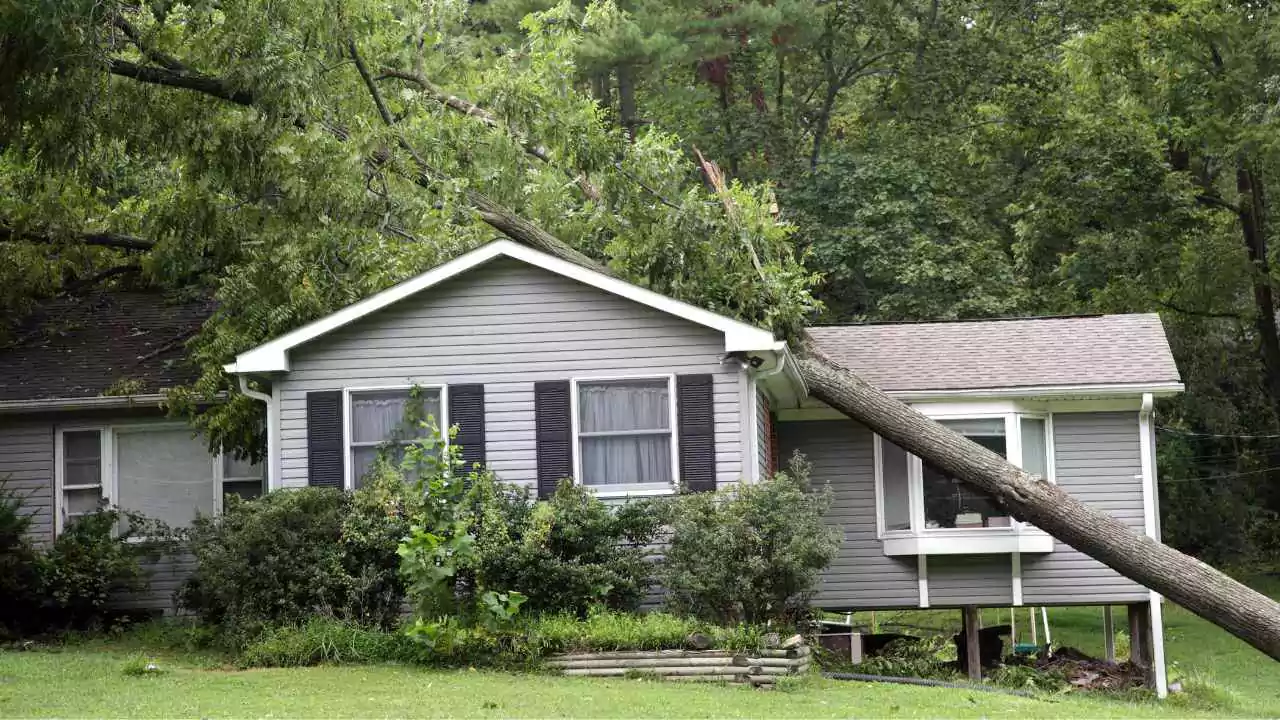Yes, in most cases, homeowners insurance covers fallen trees. However, the specifics depend on the cause of the fall, the damage caused, and the details of your individual policy. Let’s delve deeper into what’s typically covered and the factors that can influence your claim.
Understanding Homeowners Insurance Coverage for Tree Damage
Damage to insured structures: If a fallen tree damages your house, garage, fence, or other covered structures, your insurance will likely cover the repair costs. This holds for trees toppled by covered perils like windstorms, lightning, or even fire.
Coverage limitations and deductibles: Remember, your policy may have limitations like coverage caps for specific perils or deductibles that need to be met before your insurance kicks in.
What is Typically Covered by Home Insurance for Fallen Trees?
Specific Perils that May Be Covered
- Windstorms: High winds are a common culprit for fallen trees, and most policies cover damage caused by them.
- Lightning: A lightning strike can weaken or split a tree, making it prone to falling. This damage is typically covered as well.
- Snow and ice: The weight of heavy snow or ice accumulation can bring down even healthy trees. Check your policy for coverage details.
- Fire: If a fire, even one originating outside your property, causes a tree to fall and damage your belongings, your insurance might cover it.
Cost of Tree Removal
While some policies cover tree removal costs if it’s directly related to a covered peril, others might have limited coverage or require you to handle removal yourself. Check your policy for specifics.
Damage to Structures and Property
This includes repairs to your home, garage, fence, deck, or any other insured structures impacted by the fallen tree. Additionally, damage to your belongings like furniture or landscaping might be covered, depending on your policy.
Liability for Neighbor’s Tree Falling on Your Property
If your neighbor’s tree falls and damages your property, your insurance might cover the repairs. However, it’s crucial to check your policy for details, as some might exclude coverage for trees originating from outside your property.
Special Situations and Factors to Consider
- Tree removal after a storm: If a storm brings down multiple trees, your insurance company might prioritize claims based on the severity of damage and the potential for further harm. Be patient and cooperate with their assessment process.
- Insurance payout for tree damage: The payout for tree damage depends on the extent of the repairs needed, the value of your property, and your coverage limits. Make sure you understand your policy’s limitations to avoid any surprises.
- To file a claim or not: If the damage is minor and falls within your deductible range, you might be better off handling it yourself. Weigh the cost of repairs against your deductible and potential premium increases before filing a claim.
- Preventing tree damage: Regularly inspecting and maintaining the trees on your property can help minimize the risk of falling branches or entire trees. This proactive approach can save you the hassle of filing claims and potential insurance costs.
Remember, understanding your policy’s details and proactively managing your trees are key to navigating fallen tree situations with minimal stress.





